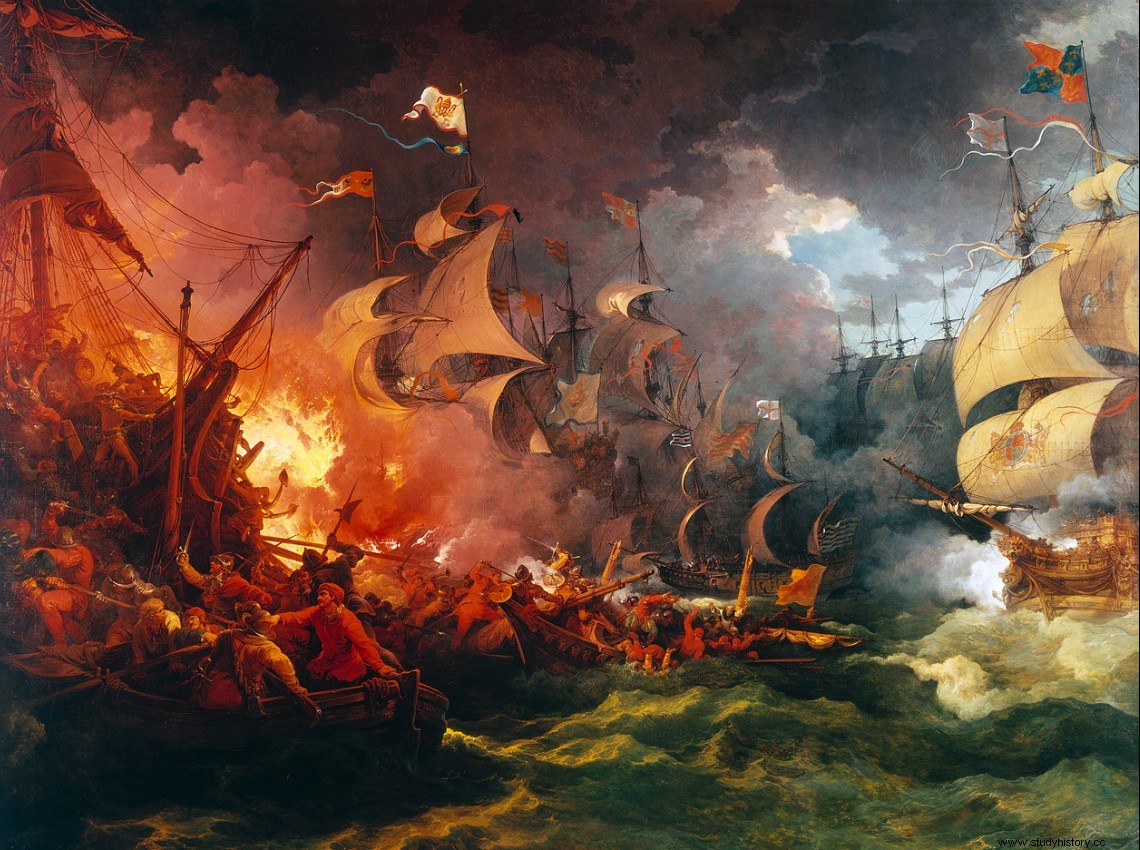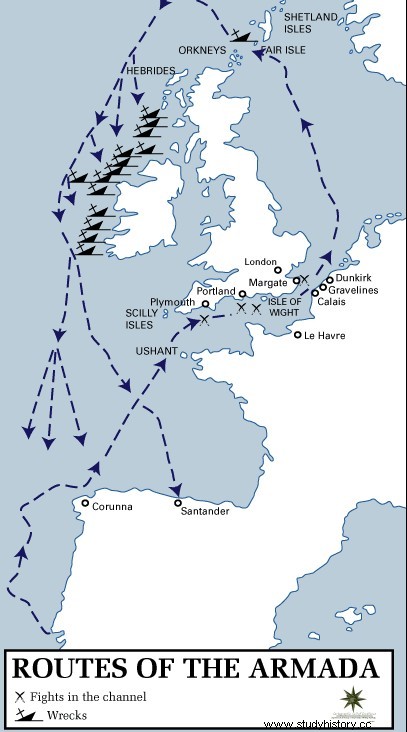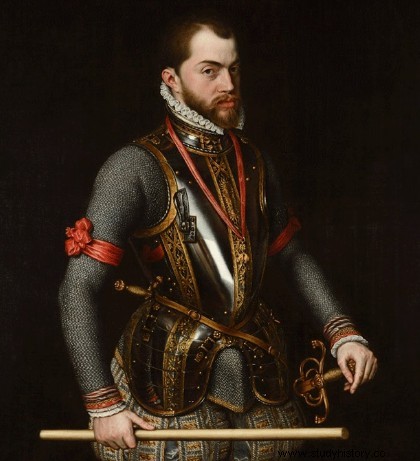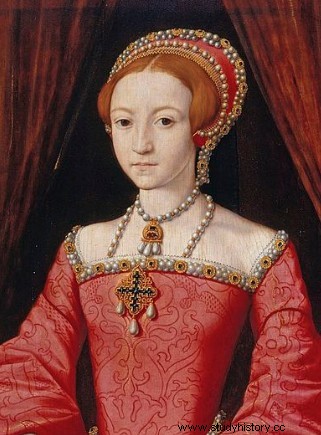A battle that has changed the history of the world.
Certainly there is a battle in world history that can be said.
The Battle of Armada between England and Spain in 1588 is one such battle.
The strongest Ottoman Empire defeated the army of the Spanish, Venetian and Roman Popes in the Battle of Preveza in the first half of the 16th century, but in the latter half of the 16th century Spain defeated the Ottoman Navy in the Battle of Lepanto in 1571. succeeded in.
For this reason, the Spanish fleet became known as the "Armada Invencible" (which was translated as an invincible fleet in Japan), to monopolize trading interests as the Atlantic and Mediterranean champions and bring wealth from around the world to Spain. Became.
Background of the Armada Naval Battle
In 1492, the Genoese sailor Christopher Columbus, hired by Queen Isabella of Spain, arrived in the Americas. In this new continent, potatoes, eggplants, tomatoes and other plants that have never been seen, as well as a large amount of silver, have been discovered, and Spain will be enriched by trade with the new continent via the Atlantic Ocean.
On the other hand, in the Mediterranean trade, trading ships were frequently attacked by pirates such as the Barbarossa brothers who received the support of the Ottoman Empire, so it became the Ottoman Empire along with the similarly damaged cities of Southern Italy. Even though I challenged myself, as I mentioned earlier, I was hurt by the Battle of Preveza.
Although he continued to suffer from piracy, he won the Battle of Lepanto and Spain's trade was supposed to be solid.
In reality, however, Spanish ships crossing the Atlantic Ocean continued to be victims of pirates, many of whom were actually privateers protected by King Elizabeth I of England.
King Philip II of Spain, who saw the situation seriously, protested directly to Queen Elizabeth of England, but the English side slackened off it.
By the way, Mary I and Philip II, the sisters of Queen Elizabeth, were once a married couple, and there was a time when Philip II was also the King of England. So to speak, the two had a relationship with their uncle in law, but in a sense, it may be that they were not on good terms.
Queen Elizabeth not only helped the private ship, but also supported Nederland, who claimed independence from Spain, suppressed Catholics in the country, and executed more than 100 priests who refused to convert to the Anglican Church. In conflict with the Catholic Church, its priest, the Pope, defeated Queen Elizabeth and instructed all Catholics to aim for their lives.
Queen Elizabeth took advantage of it and executed Queen of Scotland, who was supporting Catholicism, on suspicion of her own assassination, which struck a chord with all her Catholics and broke with the Popes of France, Spain and Rome. I made it decisive.
King Philip II of Spain, who has reached the limit of patience, is granted permission to invade England by Pope Pius V.
It can even be said that England was turning virtually all European nations into enemies during this period.
Crusaders
Pope Sixtus V allowed Spain to collect crusader taxes.
In Japan, the Crusaders may be thought of as fighting Muslims, but it can be said that the entire army gathered at the call of the Pope is the Crusaders, and in that sense, the Armada Sea Battle is also linked to the lineage of the Crusaders. ..
In 1588, the Armada fleet, led by Medina Sidnya, departed Lisbon (then Spain and Portugal were personal unions) and headed for the English Channel. Records show that a fleet of 130 ships with 18,000 soldiers was forced to evacuate due to bad weather and left off Cornwall on July 19.
The English side departed 170 ships from Plymouth Port, with Sir Howard Effingham as commander and pirate Francis Drake as deputy commander.
Spanish Armada Battle

On July 21, 1588, the two armies began a battle.
The English side used a long-range gun to bombard and damage Armada, but it did not break the system. On the 26th of the same month, both shells ran out and Armada temporarily moored at Curry in France.
During this time England dispatches a fireship loaded with a large amount of gunpowder to Armada, who steers her to the north in an attempt to evacuate it.
At this time, the English fleet, which confirmed that the formation had collapsed, launched a total attack.
Armada collapsed and evacuated to the North Sea, passing north of Britain and returning to his home country of Spain.
The return trip was a miserable word, and the Armada Sea Battle ended with a lot of damage to the Spanish side due to the storms on the way, ships picking up one after another off Scotland and Ireland, and the spread of infectious diseases. Closed.
According to one theory, the Spanish side suffered the loss of 63 ships and thousands of sailors and soldiers.

Why did Spain lose and Britain win?

In terms of national power, Spain was overwhelmingly superior at that time. In addition to the great power of the original Habsburgs, Spain was moistened by the profits rising from the New World, and the experience of naval warfare was also high.
Since ancient times, many historians have been studying the Armada naval battle, and the general consensus is that the British side, which had a large number of small-turning ships, tossed a large-scale, non-turning Spanish ship. be.
Others blame the English Navy for having long-range artillery and having a longer range than Spanish ships.
Furthermore, there is a theory that the Spanish side was out of control and was hit by England, which had a chance, and it is a problem that has not yet seen the established theory.
In any case, in the Armada naval battle, there are more people who died in accidents and infectious diseases than those who died in battle.
This is common in human history, and it is known that even in the 20th century, more people died of the flu called the Spanish flu than the number of people who died in World War I.
The cause of the defeat on the Spanish side is not one, but it is probably the result of all the above factors being intricately intertwined.
More than the result of the battle, as King Philip II of Spain saw Armada returning and left behind the words, "I sent a fleet to people, never against the wind and waves." It is certain that the Spanish side lost many ships and personnel for such a disaster.
Therefore, in modern times, it is often said that the victory was not as decisive as the British side thought.
Impact of the Armada Naval Battle

As a result of the naval battle, Spain was severely damaged. The remaining 67 ships were so painful that they could no longer be used, and many of the commanders died of illness after returning to Japan, and those who survived were imprisoned.
With this as an opportunity, Spain fell from the position of the strongest nation in the world and gradually declined, and its name was removed from the great powers.
On the other hand, in the victorious Britain, despite facing financial difficulties due to war expenses, the rise of national prestige was great due to the victory, and it developed greatly contrary to Spain. Through the geological policy, he became the leader of the great powers, and after the 19th century, he became the pioneer of imperialism and achieved unprecedented development as the British Empire, a country where the sun did not set.
Therefore, it is said that the golden age of the British Empire began in the time of Queen Elizabeth, and Britain became known as Her Majesty's country.
The Battle of Armada may not have been a decisive victory for Britain, but it is certain that the fate of both countries has changed and the hegemonic nation of the world has changed.
It was a battle that changed the history of the world.
